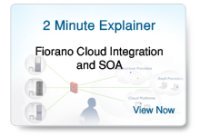What is Application Integration and why is it difficult?
Application Integration is defined as the process of making independently designed application systems work together. Integration is generally difficult because, in every case, developers must reconcile disparate information architectures involving different data, process and object models. In addition, in most cases, developers must also make the overall solution operate across multiple operating systems, databases and middleware technologies.
According to research firm Gartner, application integration accounts for approximately 35 percent of the total cost of application design, development and maintenance in a typical enterprise - large, medium or small. Since integration is vital to all modern enterprises, the crucial issue is how to integrate, not whether to integrate. What are the most effective organizational strategies, software tools and design-patterns for integration? There is now general consensus in the industry that the base infrastructure for integration within the enterprise will be the Enterprise Service Bus (ESB) and that in the months and years to come applications will increasingly be composed from Service Components, which form the basis for both SOA (Service Oriented Architecture) and EDA (Event Driven Architecture).
Why application integration is mandatory for modern businesses
Integration is expensive and difficult, but enterprises do it anyway because they have no choice. The motivation of integration typically comes from outside the IT department and is driven by multiple factors including enterprise business strategy, outside forces such as regulatory bodies (Sarbanes Oxley, HIPPA, Basel 2), or business partners to enable B2B relationships. Although enterprise managers understand that better integration technology and design will save money in the long term, most senior managers rarely spend money on integration just to clean up processes within the IS department. Managers are typically unable or unwilling to invest today to reap unquantifiable benefits several years into the future. As a result, integration is undertaken on a piecemeal basis, and only in response to urgent business needs, which tend to vary over time. Today, integration is driven by the need to respond to laws (Sarbanes Oxley, HIPPA, Basel 2), mergers and acquisitions, requirements for self-service portals for customers and employees, B2B collaboration and others.
Reasons that do not drive integration projects
Application integration is seldom performed for purely technical reasons, such as the consolidation of disparate middleware platforms into a few strategic choices, or for providing a technology base for creating flexible application systems in the future. Other technical reasons such as saving money in the IT department, reducing IT Staff, using the latest technology and conformance to the latest emerging IT standards are also typically not enough to convince most senior managers to spend resources on integration. For these reasons and more, integration projects are typically executed mainly in response to urgent or relatively urgent business requirements.
Learn more:
 Japan
Japan Germany
Germany

